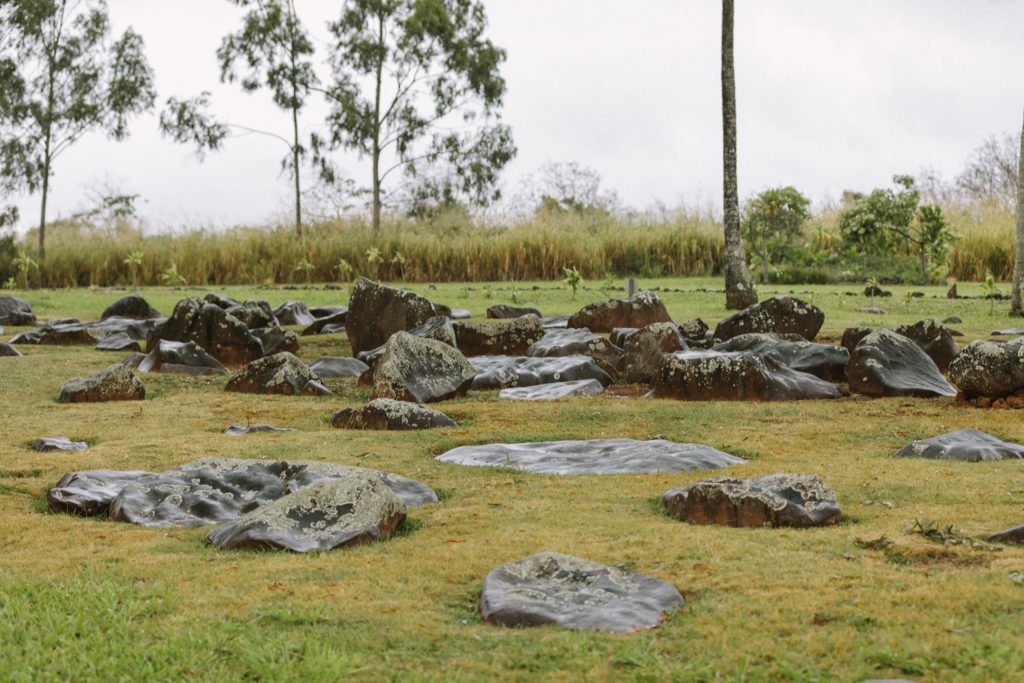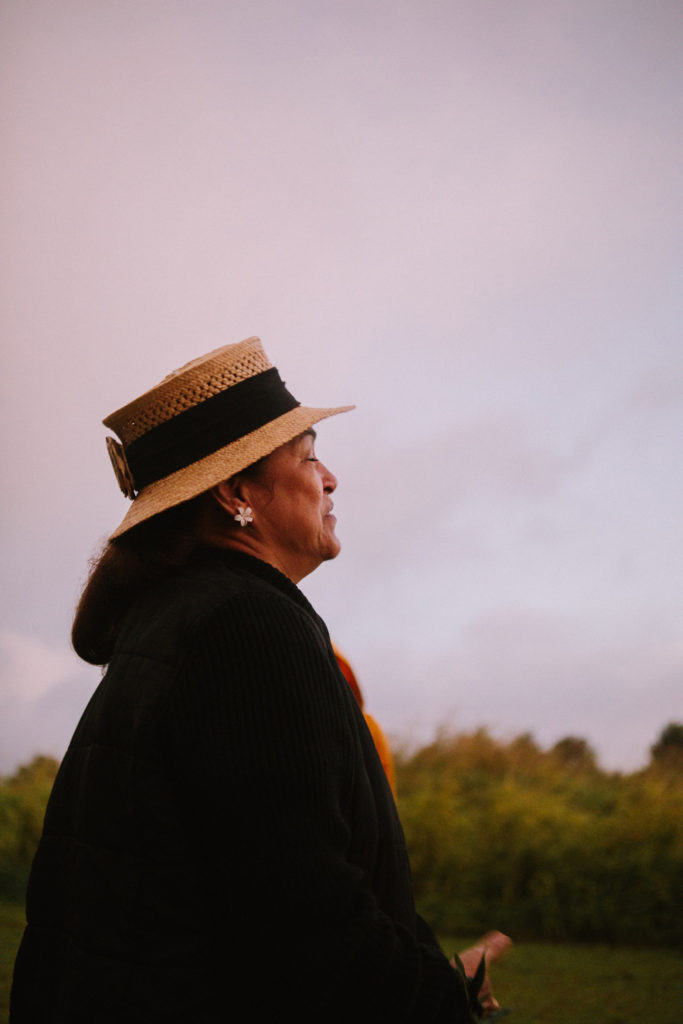Text by Christine Hitt
Images by Michelle Mishina
One afternoon centuries ago, a star rose with the sun and created a sharp shadow, like a dagger, across a stone during the birth of a child. The rarity and significance of the celestial event was not lost on the many ali‘i (chiefs) and kāhuna (priests) present, who determined the child was henceforth destined to be the greatest chief of his or her generation. People across the island could hear the beating of the sacred pahu (drums) announcing the birth at Kūkaniloko, where O‘ahu’s great ali‘i were born for generations.
Royal births at Kūkaniloko began in the 12th century, when it was believed to have been constructed for the birth of Kapawa, chief of Waialua. The last chiefly birth there was in the mid-1600s with the birth of Kākuhihewa, the 15th ruling chief of O‘ahu. Now a state monument, Kūkaniloko attracts only the occasional visitor and caretakers on the serene grassy plateau of Wahiawā where it lies between the Wai‘anae and Ko‘olau mountain ranges. In total, it is made up of 180 stones—some with petroglyphs, another scored with deep grooves, and still others with manmade basins carved into their surfaces. To this day, it remains an important Hawaiian cultural site.
Unbeknownst to many, however, is that Kūkaniloko was more than a royal birth site. It was also a place of learning for kāhuna, lua (martial art) practitioners, and kilo (astrologers), among others. Since Hawaiian culture is holistic in nature, there was no singular function of Kūkaniloko.
“Kūkaniloko taught navigation, it taught astronomy, it probably also taught ‘ōlelo (language) and the use of Hawaiian orality and its poetics, its way of naming things,” says author and researcher Martha Noyes, who holds a professional degree in cultural astronomy and studied Kūkaniloko for more than 12 years. “If you taught astronomy, then you’re teaching the sky, and if you’re teaching the sky, you’re teaching weather. Birth is associated with, of course, Mother Earth, but it’s also associated with the stars and with the plants that make birth more comfortable. Those plants may, not all of them, be associated with stars which are associated with deities. You can’t separate botany from medicine from astronomy.”

Noyes has found Kūkaniloko to be like an encyclopedia of Hawaiian knowledge that can only be deciphered by connecting stones, markers, or objects on land to the sky. This is the very definition of archaeoastronomy, a sub-classification of cultural astronomy, which requires archaeology, or physical objects, to be in the presence of astronomy. Many heiau (traditional temples of worship) and other historic sites across the Hawaiian Islands, including Kahikinui on Maui and upright stones on the top of Maunakea on Hawai‘i Island, have some unknown meaning associated with the stars.
Before Noyes began her research at Kūkaniloko, she asked friends of hers who were lineal descendants to the area if there was interest in learning more about the astronomy related to the site. It was already known that the equinoxes and solstices aligned with various stones at Kūkaniloko as well as with geological features, such as points on the two mountain ranges. It was also traditional knowledge that Kūkaniloko is the piko (the navel or center) of O‘ahu, geographically and culturally. “It’s a place of uniting relationships,” Noyes says. “It’s a place of mediation, where left meets right, north meets south—they meet at the center and the center is equilibrium. That’s why it’s a place of learning. It’s one of the reasons Kūkaniloko has an association with high ali‘i and high kāhuna, because the higher knowledges were restricted to the higher chiefs and kāhuna.”
When the equinox sun sets over Mount Ka‘ala in the Wai‘anae range, it aligns with the birthstone at Kūkaniloko, where mothers gave birth. The lineal descendants told Noyes that every stone had a meaning, though what they meant was not remembered, and shared the story of a birth when a star cast a dagger-like shadow. Which rock and where the shadow fell was still known. Using astronomy software, Noyes figured out it was the star Regulus. “It made sense,” she says, “because it’s a king maker,” referring to other cultures which also connect the star with kingship.

Over the years of visiting and studying the site, she discovered a treasure trove of information. In tracking the rising and setting of the sun and stars at Kūkaniloko, landscape markers around the island were named where these celestial events touch points on the land from the viewpoint of Kūkaniloko. This intentionally connects the sun and star rises and sets to the geography of the island. In that way, not only are the sun and stars centered at Kūkaniloko, but the geography is centered as well, enforcing the concept of it being the piko.
Furthermore, Hawaiians were so knowledgeable of the cycle of the stars that they named places they couldn’t see from Kūkaniloko, like those on the other side of the Ko‘olau or Wai‘anae ranges, based on the rising and setting of stars. Today, this aspect of astronomical knowledge is called celestial mechanics.
Noyes says she has been continually amazed by the depth and breadth of knowledge Hawaiians had of the sky, stars, and celestial motions, from her early days studying the site all the way to now, in her retirement. The stars’ metaphysical relationships are even intertwined with Hawaiian religion and philosophy. Through its alignments with the landscape of O‘ahu, Kūkaniloko perpetuates its importance to Hawaiian culture—and there’s still much more to learn from it.





